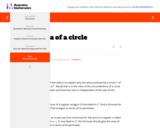
This purpose of this task is to develop an understanding of the formula for the area of the circle.
- Provider:
- Illustrative Mathematics
- Date Added:
- 06/22/2022

This purpose of this task is to develop an understanding of the formula for the area of the circle.

Open Middle provides math problems that have a closed beginning, a closed end, and an open middle. This means that there are multiple ways to approach and ultimately solve the problems. Open middle problems generally require a higher Depth of Knowledge than most problems that assess procedural and conceptual understanding.
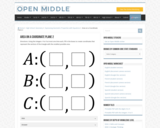
Open Middle provides math problems that have a closed beginning, a closed end, and an open middle. This means that there are multiple ways to approach and ultimately solve the problems. Open middle problems generally require a higher Depth of Knowledge than most problems that assess procedural and conceptual understanding.
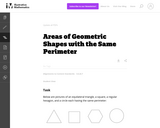
This problem is part of a very rich tradition of problems looking to maximize the area enclosed by a shape with fixed perimeter. Only three shapes are considered here because the problem is difficult for more irregular shapes.

The purpose of this task is primarily assessment-oriented, asking students to demonstrate knowledge of how to determine the congruency of triangles.
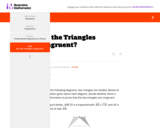
The purpose of this task is primarily assessment-oriented, asking students to demonstrate knowledge of how to determine the congruency of triangles.
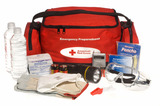
Students discover what constitutes a natural disaster, explore the different professions involved with natural disaster response, identify steps they can take to help themselves and others be prepared for natural disasters. Students also learn about filmmaking and create a film to share stories and lessons learned from natural disasters and educate individuals about natural disaster preparedness. Emergency Preparedness picture from public domain (https://nara.getarchive.net/media/washington-dc-july-7-2006-a-red-cross-ready-to-go-preparedness-kit-showing-946cb7)
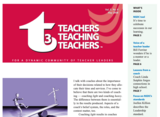
This article introduces the idea of moving from coaching light, which is very surface level and how we can support educators through building the relationships to ultimately engage in coaching heavy - which impacts practice and improves outcomes for students.

Students analyze World War II posters, as a group and then independently, to explore how argument, persuasion and propaganda differ.
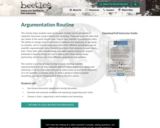
This activity helps students learn to be open-minded and to participate in respectful discussion using evidence and reasoning. These are great life skills that any citizen of the world should have. They’re also scientific argumentation skills. The ability to change one’s mind based on evidence and reasoning, to see issues as complex, and to look at issues and claims from different perspectives are all scientific argumentation skills. Students also learn that absolute answers rarely exist. These skills and understandings are useful beyond science for anyone interested in figuring things out and in talking with others about issues, particularly with those who have different perspectives and opinions.

Use this Lesson following The Ratification Debate on the Constitution Narrative.

Use this lesson after reading The Constitutional Convention Narrative and/or the Constitutional Convention Lesson.
This 14 day Unit Plan integrates the Utah Core Standards for Language Arts and for Reading and Writing in History/Social Studies with the existing Utah Social Studies Standards. The students read, research, draw conclusions, and write beginning level argumentative essays comparing/contrasting major world religions. For a more thorough summary see the Background For Teachers section.
This 14 day Unit Plan integrates the Utah Core Standards for Language Arts and for Reading and Writing in History/Social Studies with the existing Utah Social Studies Standards. The students read, research, draw conclusions, and write beginning level argumentative essays comparing/contrasting major world religions. For a more thorough summary see the Background For Teachers section.
In this 28 day unit, students will gain background information on historic wars, compare different genres' presentations of events, recognize different points of view, research an essential question, compile evidence, create warrants that lead to a claim which answers the essential question, and write an argumentative essay.
Students will discover a policy within their school or district that is important to them and that they'd like to change. They will conduct an investigation of the policy in question and write a letter with their claim, results, and recommendation to the appropriate audience.

What happens when the world’s greatest harpist gets thrown into the sea by jealous pirates? Find out in the YourClassical Storytime telling of the ancient Greek myth Arion and the Dolphin, with art and narration by Ana Freeberg and Ally Thompson, and enchanting harp music performed by Susann McDonald.
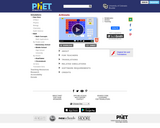
Remember your multiplication tables? ... me neither. Brush up on your multiplication, division, and factoring skills with this exciting game. No calculators allowed! The students will be given mutiplication and division problems which they must answer. They also have the option of being given a number then stating the factors of how that number was attained using either multiplication or division.

Remember your multiplication tables? ... me neither. Brush up on your multiplication, division, and factoring skills with this exciting game. No calculators allowed!
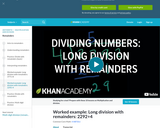
This arithmetic lesson demonstrates more long division problems with remainders.[Arithmetic playlist: Lesson 26 of 38]